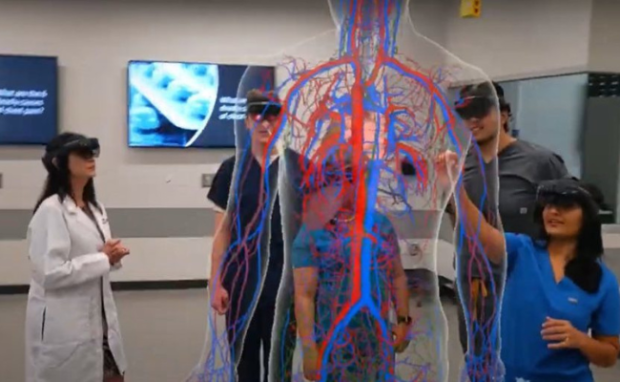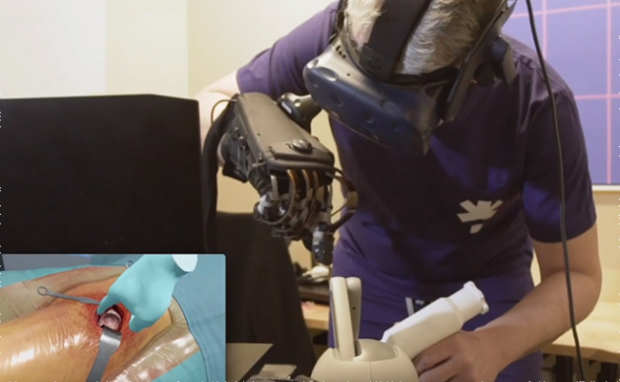VR Medical Training Helps Students Train Without Cadavers
Medical students usually study human anatomy by studying human cadavers. Thanks to a recent VR medical training program, that could become a thing of the past.
Case Western Reserve University’s School of Medicine is the first college to remove corpses from its anatomy courses.
It partnered with Microsoft to enable students to examine the human body by viewing them through virtual reality headsets.
How does VR medical training work?

Photo Credit: interactivecommons.org
Programmers and 3D artists collaborated with the school’s anatomy faculty to create the HoloAnatomy Software Suite.
Specifically, it uses the Microsoft HoloLens to show the human body in three dimensions via mixed-reality technology.
Students wear the HoloLens to view a full-scale model of a human that they can freely dissect and study.
Robert L. Masson, the neurosurgeon CEO of the tech firm eXpanded eXistence, said VR medical training is less expensive than using cadavers.
Moreover, Ilumis CEO Mark Day stated in a news release, “Universities can reduce the expensive, time-consuming task of obtaining cadavers.…”
Masson also said HoloAnatomy would enable students to work at the macro and microscopic level for detailed anatomical education.
In other words, med students could check each part and then zoom in to look at the finer details. As a result, universities could merge anatomy and histology into a single course.
Day said, “students can enter a world of new possibilities where they learn faster… and transcend the classroom with unprecedented collaborative potential.”
How can VR medical training improve?

Photo Credit: www.medgadget.com
Some experts see one apparent flaw in VR medical training: the lack of feeling. Also, Masson said it does not provide the sensation of touching body parts.
That is an important factor for medical students because they must know how to handle body parts during surgeries properly.
Fortunately, numerous companies have been working on Haptic VR Gloves. As the name suggests, they enable users to feel objects in virtual reality.
For example, Meta’s Reality Labs is developing a VR glove that will allow users to feel the texture and weight of digital objects.
Related Articles
Conclusion
Case Western Reserve University’s School of Medicine pioneered the first VR medical training program for students. Consequently, it removes the need for cadavers.
Technology has been improving the field of medicine in several ways. For example, Singapore’s Speedoc helps people access medical services via affordable telehealth solutions.
Tech is rapidly improving the world, and you must catch up. Fortunately, Inquirer Tech can help by sharing the latest digital trends.